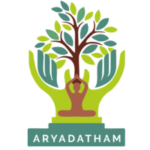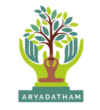
Panchakarama Treatment
Ayurvedic Panchakarma is a traditional detoxification and rejuvenation therapy that aims to balance the body, mind, and spirit by removing accumulated toxins and restoring the body’s natural equilibrium. The Panchakarma treatment involves a series of steps and therapies that are customized based on an individual’s constitution (Prakriti) and imbalances (Vikriti).
1.
Preliminary Assessment (Purva Karma):
- Initial consultation with an Ayurvedic doctor to determine your Prakriti (constitution) and Vikriti (current imbalances).
- Based on the assessment, a personalized Panchakarma treatment plan is designed to address your specific needs.
2.
Snehana (Oleation):
- This step involves internal and external oleation, which means using medicated oils or ghee to lubricate the body internally and externally.
- Internal oleation includes consuming small quantities of medicated ghee or oils.
- External oleation involves receiving full-body massages using specific herbal oils.
3.
Swedana (Sudation):
- Swedana is the process of inducing sweating to further open up the channels and release toxins from the body.
- Different methods of inducing sweating can be used, such as steam baths, herbal steam, or warm poultices.
4.
Vamana (Emesis) - Optional:
- Vamana is a controlled therapeutic vomiting process used to eliminate excess Kapha dosha and toxins from the upper gastrointestinal tract.
- It’s typically recommended for individuals with Kapha-related imbalances.
5.
Virechana (Purgation) - Optional:
- Virechana involves the administration of herbal laxatives to eliminate excess Pitta dosha and toxins from the intestines.
- It’s generally recommended for individuals with Pitta-related imbalances.
6.
Basti (Enema):
- Basti is a crucial Panchakarma therapy involving the introduction of medicated decoctions, oils, or ghee into the colon.
- This helps to remove accumulated toxins and balance Vata dosha.
- Basti is divided into two types: Niruha Basti (with decoctions) and Anuvasana Basti (with oils or ghee).
7
Nasya (Nasal Administration):
- Nasya involves administering medicated oils or herbal preparations through the nostrils.
- This helps to clear the nasal passages, eliminate accumulated toxins from the head region, and balance Prana Vata.
8
Rakta Mokshana (Bloodletting) - Rarely Used:
- In specific cases, bloodletting may be recommended to remove excess Pitta and toxins from the blood.
- This therapy is performed by trained Ayurvedic practitioners.
9
Paschat Karma (Post-Treatment Care):
- After the main Panchakarma therapies, a period of post-treatment care is advised, including a specific diet, lifestyle recommendations, and herbal supplements to support the body’s rejuvenation process.
It’s important to note that Panchakarma should only be undertaken under the guidance and supervision of a qualified Ayurvedic doctor. The therapies are tailored to each individual’s unique constitution and imbalances, and the treatments may vary based on the practitioner’s assessment.
Ready to Restore Harmony in Your Mind, Body, and Soul?
Information
Phone
+91 9947047362
aryadathamayurveda@gmail.com
Address
Aryadatham Ayurveda Chikithsalayam, Near Thirunarayanapuram temple , Mattarakkal p o, Thazhekkode via, Perinthalmanna Malappuram dt Kerala -679341
Copyright 2025 © All Right Reserved Aryadatham

